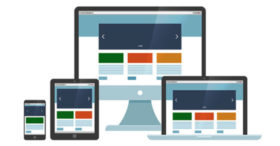In today’s data-driven world, business owners are constantly urged to track everything. And for good reason — having accurate, timely information displayed in an easy-to-understand format can allow you to spot trends, avoid risk and take advantage of opportunities.
This includes your company’s website. Although social media drives so much of the conversation now when it comes to communicating with customers and prospects, many people still visit websites to gather knowledge, build trust and place orders.
So, how do you know whether your site is doing its job — that is, drawing visitors, holding their attention, and satisfying their curiosities and needs? A variety of metrics hold the answers. Here are a few of the most widely tracked:
Page views. This metric is a good place to start, partly because it’s among the oldest ways to track whether a website is widely viewed or largely ignored. A page view occurs when a visitor loads the HTML file that represents a given page on your website. You want to track:
- How many pages each visitor views,
- How long each “unique visitor” (see below) remains on the page and your website, and
- Whether the visitor does anything other than peruse, such as submit a form or buy something.
Unique visitors. You may have encountered this term before. It’s indeed an important one. The unique visitor metric identifies everyone who comes to your website, counting each visitor only once regardless of how many times someone visits.
Think of it like friendly neighbors stopping by your home. If Artie from next door stops by twice and Betty from down the street drops in three times, that’s two unique visitors and five total visits. Tracking your unique visitors over time is important because it lets you know whether your website’s viewing audience is growing, shrinking or staying the same.
Bounce rate. At one time or another, you may have heard someone say, “All right, I’m going to bounce.” It means the person is going to depart from their current surroundings and go elsewhere. When a visitor quickly decides to bounce from (that is, leave) your website, typically in a matter of seconds and without performing any meaningful action, your bounce rate rises.
This is not a good thing. A high bounce rate could mean your website is too similar in name or URL to another company’s or organization’s. Although this may drive up page views, it will more than likely aggravate the buying public and reflect poorly on your company. An elevated bounce rate could also mean your site’s design is confusing or aesthetically displeasing.
To quantify bounce rate, unique visitors and page views — as well as many other useful metrics — look to your website’s analytics software. Your website provider should be able to help you set up a dashboard of which ones you want to track. Contact our firm for help using these metrics to determine whether your website is contributing to revenue gains and providing a reasonable return on investment.
© 2021 Covenant CPA


